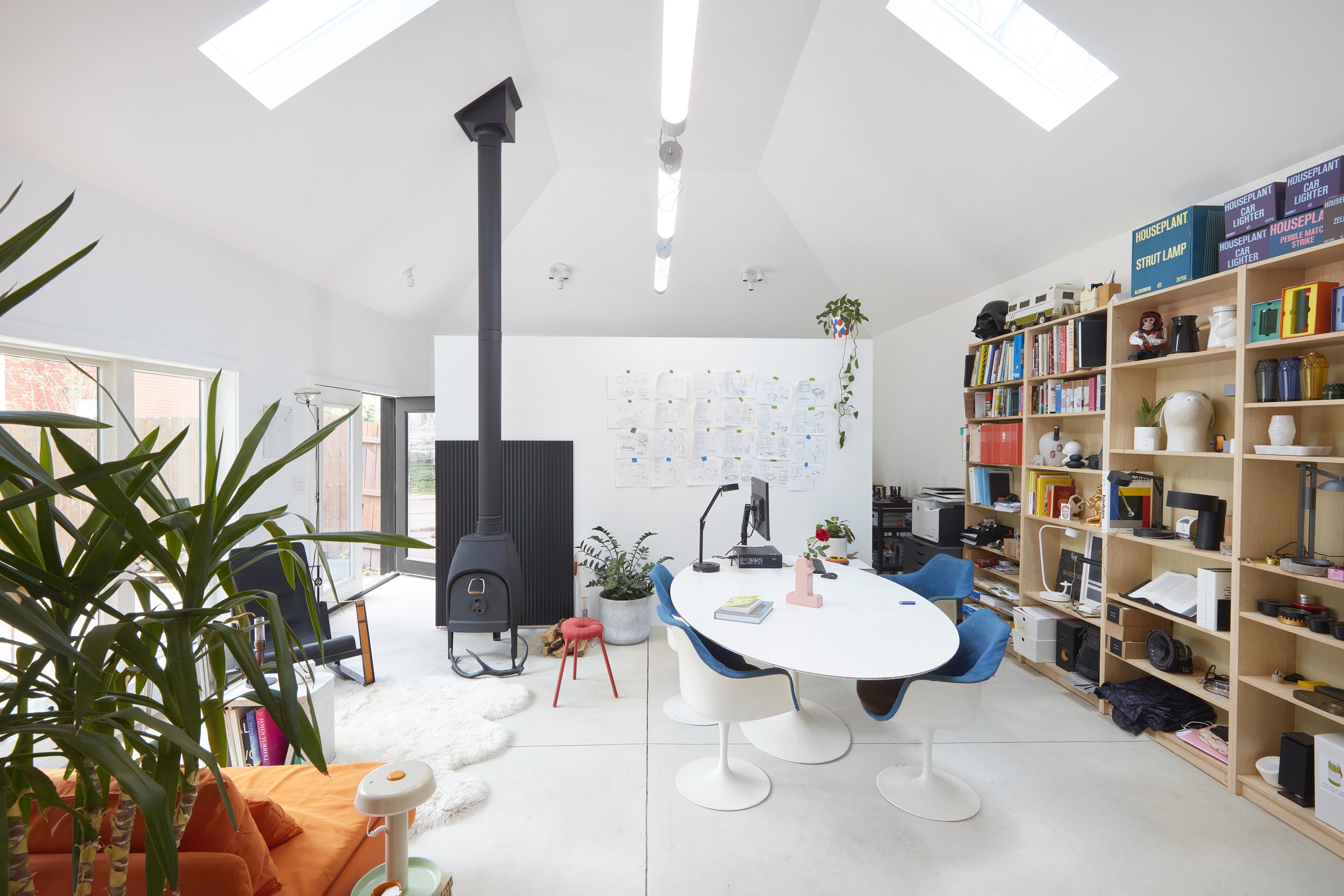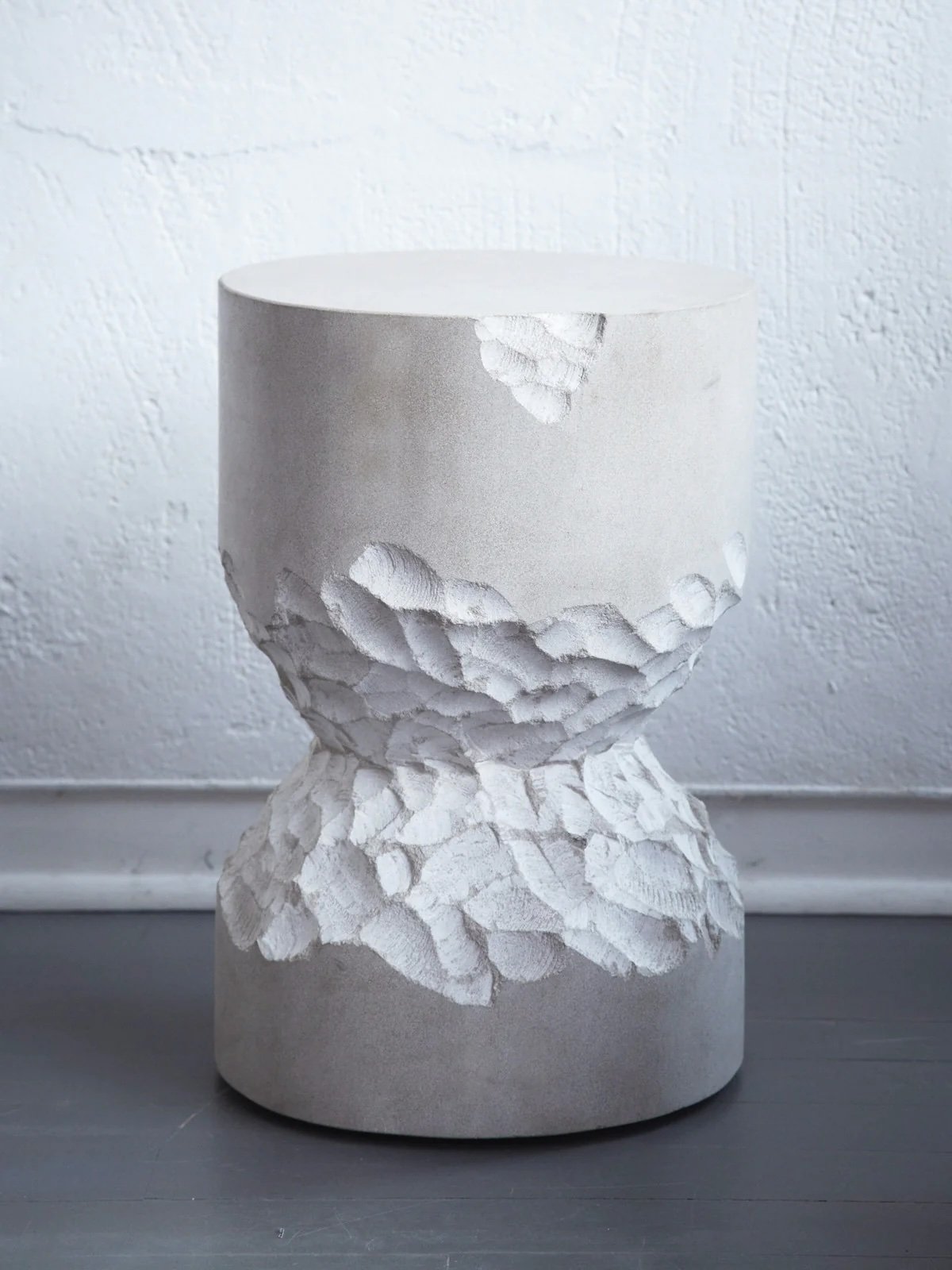Science > Design
with Brian Richer of Castor Design
Stanton Yards 9666 E. Jefferson, Detroit, MI | On View Thru 7/19
BRIAN RICHER is an international award-winning designer based in both his hometown of Toronto and his adopted home of Detroit, and is a co-founder of Castor Design. I have had the privilege not only of working with Richer on this exhibition but, first, getting to know him as a neighbor and friend. This is important to note because it is through the uniquely collegial rapport one builds with a neighbor that I learned, and quickly came to admire, Richer’s design perspective and, importantly, his immense curiosity (and knowledge) of so many pursuits tangential to design. Especially science.
Richer’s studio is a secret (sort of) but important pillar in Detroit’s Little Village. Evidence of Richer’s hand in shaping the neighborhood abounds - from a pair of cheeky orange cone-shaped metal bollards to a certain cedar-clad residence(y) - though these represent a fraction of his contributions. It is a place that feels like a design studio but also like a home, a library, and sometimes a museum. Visiting his studio one is greeted by an immense array of things. Not to say his studio is cluttered, on the contrary, there is evident order to the broad range of objects representing Richer’s equally broad range of curiosities. Richer’s designs include everything from his slick primary shapes lighter to his vibrant, pill-shaped thermos/bottle cooler to his award-winning essentialist lighting and back to his new line of frying pans. These are nestled within an immense bookshelf (itself a spectrum of art, design, philosophy and science) as well as beside and/or on top of iconic 20th century design from the likes of Saarinen, Eames and Jeanneret.
Richer’s eye for truly great design is apparent, as is his meticulous attention to materials and appreciation for craftsmanship. But what strikes me most is his genuine interest in how things work. Not just how an object functions for us, or how the design of an object impacts us, but how the language we use to title, identify, and describe an object shapes our connection to it. And how practical science shapes it.
These topics are often discussed when visiting Richer’s studio and it was in the middle of one such conversation that I first became aware of a giant, beautiful telescope in the room, of his own design. Which led to a discussion of the Particle Accelerator he also designed.
Then he got up from his desk to show me the Cloud Chamber he created to show the trails of electrons and other subatomic particles - giving image and presence to the building blocks of the universe that, to most, remain vague, abstract, invisible concepts. This idea of giving presence to the abstract and invisible is expressed in the distinct elegance of every object Richer has designed from these conceptual (yet highly practical) sculptures to his products, for example, his Induction Tube Lights.
The clean, honest minimalism of Richer’s aesthetic emphasizes his love for materials and his mastery as a craftsman (worth noting, he was first an architectural stone carver and on top of that I can attest to the fact that he can truly build anything out of anything). Yet, I find in Richer’s work that he is also a poet - each object an ode to the foundational (and miraculous) scientific principles that shape our daily lives on this planet and yet slip through the cracks of our daily consciousness.
For Richer, Science is Greater than Design because science shapes design. Without science, design cannot exist. And yet, our understanding of science is still so little. It is a paradox Richer embraces with determination as much as admiration. Not to say he takes this observation too seriously, as every object seems to carry a reverent but cheeky inside joke drawing awareness to our unawareness with a sense of irony and fun. The seven conceptual sculptures in this exhibition, require us to pause and contemplate our understanding (or lack thereof) of the world around us while also inviting us to take part in the mystery.
I hope our exhibition inspires curiosity, not just for the objects meticulously designed, built and engineered by Richer but for seeking higher understanding and connection with the world around us.
After all, isn’t that what design is all about?












